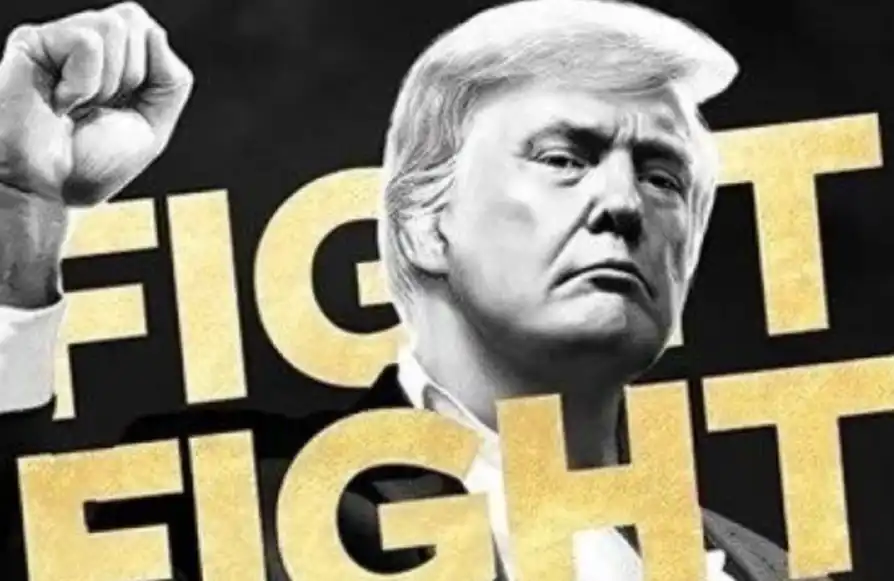SevenX Ventures: Helping dozens of projects design economic systems, we have summed up these 5 points
If cryptocurrency is a huge experiment, then the token economy is the most important part of this experiment. In this increasingly introverted market, there is almost a consensus that whether it is the underlying public chain (or other infrastructure), middleware or upper-level applications, they all need to make themselves more economical through better economic system design. competitive.
But it is not easy to design a good economic system, it is like a war in the dark, complex and changeable , It has therefore become the first hurdle that many entrepreneurs need to pass. At this time, investment institutions with mature thinking and systematic methodology on the token economic system have become an important role in helping entrepreneurs break through, and SevenX Ventures is one of the representatives.
SevenX, which defines itself as the "Asian Blockchain Pioneer", is one of the few in this market before the start of DeFi Summer Start to study and think about the encryption VC of economic system design, and constantly enrich and improve your own methodology in continuous practice. SevenX has accumulatively helped dozens of projects including DODO, ArDrive, Meson Network, Rangers, Metametaverse, etc. to design their economic systems.
"A good token economic system needs to combine the technical essence and business structure of the project, and follow a logical step It comes from a step-by-step deduction, rather than "creative" out of thin air, or imitation. ” In a recent interview, the SevenX team shared with us their post-investment system designed around the economic system, as well as the 5-point method for economic system design.
SevenX’s post-cast view: giving real and valuable help to the project
< /p>
What kind of investors do current Web3 entrepreneurs need?
A founder described it this way: "First of all, it is able to resonate at the same frequency. Simply put, it is a person who understands me .And then it can give practical help, such as follow-up financing, such as business cooperation, such as the design around tokens, to solve practical problems.”
This actually represents the mentality of most Web3 entrepreneurs to a certain extent. However, if the time goes back to five years ago, the answer we may get will be completely different. At that time, the interaction between entrepreneurs and investors may be a simple and direct "address, send money". Investors will hardly participate in the construction of the project, and of course entrepreneurs do not need to. Today, the Web3 venture capital market has experienced "barbaric growth", rotation of hot spots, and replacement of bulls and bears. The entrepreneurial paradigm and investment paradigm have undergone tremendous changes. Both venture capitalists have entered a rational era with clearer supply and demand and clearer levels.
Under the new investment paradigm, "continuous empowerment" is one of the key words of SevenX. In fact, the word "empowerment" has been written into the DNA of the team since the establishment of SevenX. It is the value that SevenX has always adhered to to achieve self-growth by helping others to succeed.
How should we help? What do you need help with? "SevenX advocates "immersion investment", does not urge project owners to grow up, and provides real and valuable help when they need it. ” SevenX divides its post-investment system into two aspects: special empowerment and general empowerment. The special empowerment is based on the network and ecology formed by the existing Portfolio, and is targeted at a certain track. The general empowerment covers many aspects such as financing, industrial resource integration, brand consulting, marketing and economic system design. At this stage, economic system design has become the "killer feature" of SevenX's post-investment service.
From macro to micro, the 5-point method designed by SevenX economic system
< /p>
Although the importance of economic system design is unquestionable, to make a project successful or more directly increase the price of tokens, it requires not only a good economic system, but also a large Market cycles, and the fundamentals of the project.
At the same time, SevenX believes that the economic system design of any project must not be separated from the technical essence and business of the project architecture. A good economic system is derived step by step according to logic, rather than relying on "creativity" out of thin air, let alone imitating and copying without thinking.
Many entrepreneurs tend to fall into the following misunderstandings when designing the economic system of their projects:
I think the project must have a profit model or cash flow income
Forcibly add application scenarios for tokens, resulting in unnecessary usage friction
Confusion of value storage, exchange medium, security protection, and voting power leads to confusion in the internal structure of the system.
· When the internal business logic is not understood Copying the dual-currency, triple-currency and other models in a clear situation will lead to a rapid collapse of the system
· Excessive release of incentives leads to Ponzi effect, or The release of incentives is too strict, resulting in no one participating
. It is believed that the economic system can be centrally adjusted at any time, resulting in high uncertainty of participants , thus losing community trust
The construction of the token economy system is a very complex and comprehensive sex work, so a perfect "top-level design" is especially needed. In practice, SevenX will discuss and deduce the best economic system plan with entrepreneurs through the WorkShop to ensure that the designed economic system can truly meet the real needs of each project at the current development stage. "What we are doing is actually guiding entrepreneurs through theories and tools, rather than developing a set of standardized templates to apply to all projects."
What do these theories include? SevenX summed up their 5-point method.
1. Changing perspective from limited liability company to sovereign economy
< /p>
For entrepreneurs who come to Web3 for the first time, they first need to make an important perspective change.
Because the block chain democratizes minting rights for the first time, the design object of the Web3 entrepreneurial team, It has transformed from a profit-oriented limited liability company to an on-chain sovereign economy that aims to support ecological development and relies on currency issuance and taxation for financial management.
Therefore, a Web3 project does not need a centralized business model, nor does it need a continuous cash flow income model, It can expand the economic aggregate of the economy by creating a sovereign economy with competitive advantages in infrastructure and policy culture, welcoming new immigrants (users and ecological partners) to the economy. At this time, the token, which is the internal value carrier of the economy, will increase in price due to its relative scarcity.
A Web3 entrepreneur, as the creator of a new sovereign economy, will face the New immigrants from all over the world came to the land they made. What mechanisms should be devised to help them adjust their mutual interests and disputes, and to facilitate cooperation among different members? Do you want efficiency first and centralize governance in the hands of the development team, or pursue an open governance strategy and delegate governance to the community? This is internal thinking. Externally, as a native sovereign economy on the chain, how should a Web3 project define its own boundaries? How to interact with other ecologies, how to start trade with other economies, and how will settlement be carried out? These problems are difficult for many technical teams to realize at the beginning, but these decisions will greatly affect the subsequent development of the project.
2. "Fiscal policy" and "monetary policy" that require decentralized implementation
Just as a country uses fiscal policy and monetary policy at the same time when regulating its own economic development, a Web3 project has established a sovereign economy on the chain The main body can also adjust the economy through these two methods, thereby promoting its own economic growth. The difference is that these policies need to be guaranteed by technical means on the chain, and adjusted and implemented through a decentralized governance system, rather than centralized adjustment and management by the "central government", that is, the entrepreneurial team itself.
"Fiscal policy" corresponds to the overall policy of the economic system related to the project. Such as transaction fee rate, staking model, agreement taxation, ecological fund and token usage scenarios, etc. "Monetary policy" corresponds to the project's policy on tokens. Such as issuance mechanism, additional issuance and destruction model, token distribution model, etc.
"Fiscal policy" and "monetary policy" complement each other in order to fully promote the internal and external circulation of the economy , reduce friction, and enable the project token to capture the value accumulated and precipitated by the expansion of the project economy to the greatest extent.
3. Create an incentive system based on "value co-construction"
In addition to promoting the steady development of the economy and accumulating value, the biggest innovation of the Web3 economic model lies in the use of tokens to stimulate behaviors worthy of being encouraged and advocated in the economy. This will transform the traditional Web2 "money-burning subsidy" model into the Web3 "value co-construction" model, enabling entrepreneurs to use relatively small cash expenditures to seek the possibility of community co-construction at the beginning, thereby completing user growth and user transform.
That is, after using various policies to attract new immigrants to this sovereign economy on the chain, they need to be encouraged to Continuously carry out economic activity construction, and rationally distribute the value brought by economic development to immigrants participating in economic construction. To this end, it is necessary to sort out and define the various stakeholders in the economic system. What behaviors will they have? How does it interact with the system? What behaviors are incentivized for the system? And what interaction is the system does not want to appear? How can these unwanted interactions avoid or reduce damage to the system?
It should also be noted that these policies designed around the goal of "value co-construction" should be chained once confirmed The above rules are determined and executed. For a truly decentralized Web3 project, the modification and upgrade of its various policies must be carried out through the governance mechanism on the chain, so as to gain the trust from users and the community, so that the management rights of this economy are truly owned by the community. A good on-chain economic system design requires not only careful thinking and continuous verification, but also a reasonable governance model as a means of future adjustment.
4. Behavioral cost and production means construction to realize token consumption
It is not enough to focus on incentives alone, the "other side of the coin" is costs. The high probability of interaction that can be completed without paying any "price" is meaningless or even consuming for the system, and the behavioral cost of stakeholders in the economic system is also an important means to achieve token consumption.
In addition, the construction of production materials is another key scenario for consuming tokens. In the system of the sovereign economy on the chain, the core is all kinds of economic activities, and to carry out economic activities, there must be production relations and production materials, which are actually overlooked by many entrepreneurs.
After the token consumption mechanism is established, combined with the token distribution determined by the incentive system, a basic token flow The framework is completed, and the next thing to think about is the matching of scenarios (or behaviors) and token types, whether to use Governance Token, Utility Token or the foreign exchange reserves of the economy (for example, OpenSea's foreign exchange reserves are ETH and SOL, etc.)? And the setting of specific values, such as at what rate to distribute and consume? Do different rates apply to different stages? Is it faster to distribute or consume faster? These also adapt to the business logic and development stage of the project itself.
5. Use NFT to expand the design space of the economic system
If FT corresponds to "currency" and "stock" in a sovereign economy, NFT corresponds to "objects" in a sovereign economy. NFT is a container that can contain almost all content that can be expressed abstractly. Therefore, in a sovereign economy, with the two basic abstractions of "money" and "things", many economic activities can be extended and organized around these two basic abstractions, and more complex production relations and ecology can be established. content.
For example, in chain game applications, game characters and game equipment constitute the most basic commodities in the ecology Types, these on-chain commodities are often represented by the NFT standard; and for a music application, the content and even specific listening rights (similar to the membership purchased by the user) can also be cast as NFT. Therefore, after introducing NFT into the economic system, the "residents" in the encrypted economy can unlock some special rights granted by the organization through NFT, which also constitutes an incentive method other than monetary and fiscal policies.
SevenX believes that introducing NFT into the encrypted economic system will become an inevitable development trend. In the future, we will see that all NFT projects will issue their own FT, and all FT will also issue their own NFT. In fact, there are already some projects making attempts in this direction, such as Everfinance invested by SevenX. The NFT they are currently auctioning will become a PASS for adding liquidity to the project in the future, which will be more critical to the system. The permission and rights of the behavior are given to the people who own NFT.
SevenX’s investment philosophy: Adhere to early investment and look for non-consensus targets
Not simply chasing hot spots, but focusing on the longer-term development trend of the industry, laying out the technology in advance and deepening the construction of an ecosystem with more solid technologies has always been SevenX's criteria for selecting excellent projects.
In the last round of bull market that just passed, we witnessed many new public chains relying on capital to mature. However, with the increasing number of applications in these public chains, the hidden problems in the underlying technology are gradually exposed.
The focus of SevenX has not been misled by the enthusiasm of the market, and it has only focused on the underlying core technical barriers for a long time Ecosystem, and in-depth understanding of the technical logic and spiritual characteristics of the ecology, such as Near, known for its sharding technology, has the spirit of technology supremacy and the strategic thinking of undertaking the transfer of the Web2 paradigm to Web3; and Arweave, the representative of the new storage paradigm, has a strong The spirit of decentralization and the organizational form of community openness and mutual assistance, each performing its own duties, etc. Although due to various reasons, these ecology applications have not been able to shine in this round of bull market. However, due to its unique ecological advantages and spiritual characteristics, it is more likely that a completely different application paradigm will appear in the future.
It can be seen that if there is no solid technology and clear spirit as a guarantee, only relying on the boost of capital, an ecological The system is difficult to pass the long-term test. The hottest deals are often not the best deals. VCs with a real long-term vision are precisely those institutions that can block the noise of the market, make independent judgments and implement them firmly.
Welcome to join the official BlockBeats community:
Telegram Subscription Group: https://t.me/theblockbeats
Telegram Discussion Group: https://t.me/BlockBeats_App
Official Twitter Account: https://twitter.com/BlockBeatsAsia


 Forum
Forum Finance
Finance
 Specials
Specials
 On-chain Eco
On-chain Eco
 Entry
Entry
 Podcasts
Podcasts
 Activities
Activities
 OPRR
OPRR








